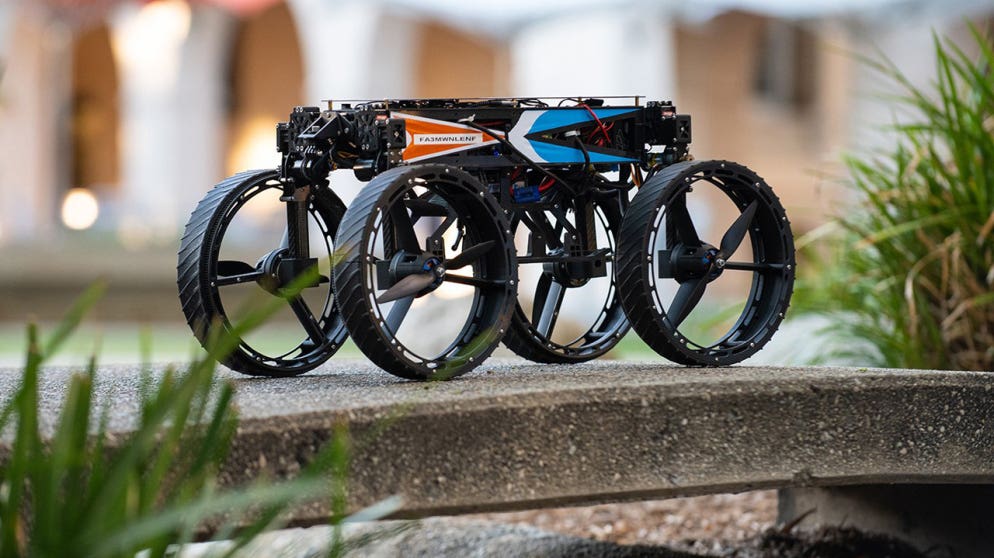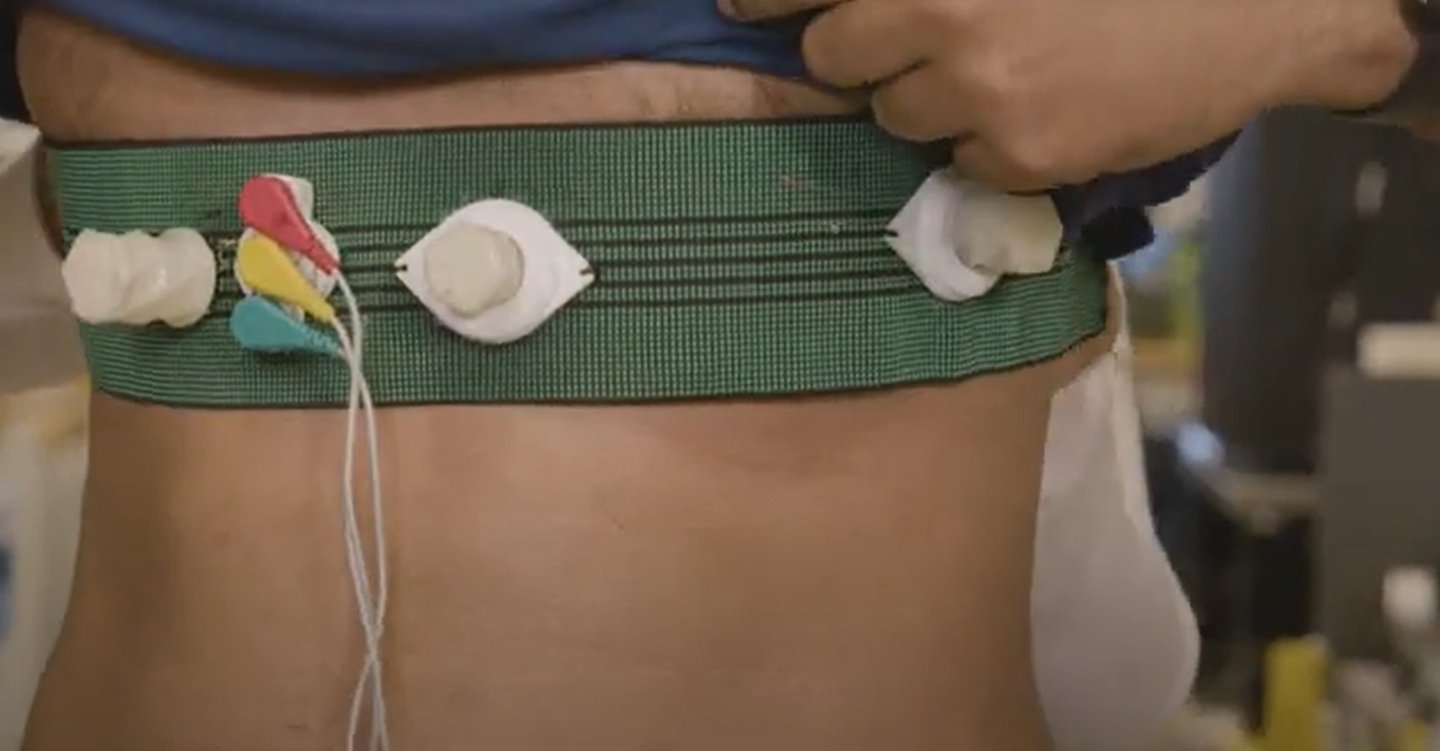‘Transformer’ robot can roll, walk, and fly to save the day
The M4 (Multi-Modal Mobility Morphobot), showcases an incredible degree of adaptability, with the capacity to reconfigure its structure.

[July 18, 2023: Staff Writer, The Brighter Side of News]
The M4 (Multi-Modal Mobility Morphobot), showcases an incredible degree of adaptability, with the capacity to reconfigure its structure. (CREDIT: Caltech)
At the nexus of engineering and robotics, engineers at the Center for Autonomous Systems and Technologies (CAST) at the California Institute of Technology (Caltech) have made an evolutionary leap in robotic locomotion. They have constructed a robot that oversteps the boundaries of conventional mechanical movement, proficiently displaying a high level of versatility rarely seen in robotics.
This groundbreaking innovation, the M4 (Multi-Modal Mobility Morphobot), showcases an incredible degree of adaptability, with the capacity to reconfigure its structure to navigate across a myriad of terrains, much like a real-life transformer.
While robots often utilize a single means of mobility such as rolling, flying, walking, or even swimming, the M4 revolutionizes this one-track approach by exhibiting an extraordinary range of motion.
The engineering team at CAST notes that their creation isn't the first machine to encompass more than one type of locomotion, but it stands out through its unique utilization of the same components for all movement types, through multiple redundant systems.
Related Stories
The ability to leverage the same components across different locomotion modes bestows upon M4 an unprecedented compactness. It also reduces the cost of its production while offering the versatility to change "posture", mirroring the adaptive behavior of many animals in their natural environment.
"Our aim was to push the boundaries of robot locomotion by designing a system that showcases extraordinary mobility capabilities with a wide range of distinct locomotion modes," explains co-lead researcher Alireza Ramezani. The M4, in its most basic form, is a four-wheeled rover. However, the true potential of these wheels lies not merely in their ability to roll but in their capability to morph and adapt, reconfiguring themselves in a matter of seconds to enable flight.
The M4's innovative design includes wheel attachments that can rotate horizontally, revealing propellers within the wheel rims. When activated, these propellers allow the robot to take to the skies, overcoming obstacles that lie in its path. This adaptive functionality of the wheel attachments is instrumental to M4's wide-ranging mobility.
When the M4 is not soaring in the skies, it can modify its wheel angles to slide underneath low-lying obstacles. The wheels can be utilized like appendages, helping the robot to 'crawl' under barriers that prevent it from moving forward in a rolling manner.
The team derived inspiration from the behavior of quadrupedal animals, incorporating into M4 the ability to 'rear up' onto its rear wheels to survey its surroundings and locate a suitable path over obstacles. The robot's propellers come into play once again here, offering stability as the robot performs these complex maneuvers.
Multi-Modal Mobility Morphobot (M4). a Shows M4 in wheeled mode. b Illustrates cartoon depictions of M4’s transformation to other modes. (CREDIT: Nature)
Further expanding on M4's transformative capabilities, the team integrated artificial intelligence (AI) to enable the robot to navigate through complex terrains autonomously. The AI empowers the robot to scan the path ahead and adjust its locomotion accordingly, eliminating the need for manual commands. This intelligent design initiates most tasks with the M4 rolling on its wheels, its most energy-efficient mode.
Upon encountering a narrow opening or a roadblock, M4's AI might instruct the robot to adjust its posture to search for a feasible path. If it stumbles upon a non-navigable obstacle like a stream, the robot could activate its propellers and fly across the barrier, resuming its rolling locomotion on the other side.
Envisioned search and rescue example. a An illustration showing the deployment of M4 outside a collapsed multi-story building in the aftermath of an earthquake. b M4 employs its aerial mobility to reach quickly and land on inaccessible locations. c Other modes, such as wheeled mobility, are employed when a flight is impossible. (CREDIT: Nature)
While the M4 might seem like an element straight out of a science fiction novel, it is not yet ready to navigate our world outside the confines of the Caltech campus, where it has been tested. However, the platform exhibits promising potential for exploring complex environments in the real world, and its potential uses are intriguing.
The development of M4 has been partially funded by the Jet Propulsion Laboratory (JPL) and the National Science Foundation. This collaborative backing could perhaps hint at the incorporation of M4 technology into future rover missions, ushering in a new era of exploration.
In the dynamic landscape of robotics, the M4 represents a significant stride towards multifaceted mobility, demonstrating a degree of adaptability that could revolutionize how we understand and implement robotic locomotion. With its innovative design and capabilities, the M4 is not just a testament to the advancements in robotics but also a signpost, guiding the direction of future developments in this field.
Note: Materials provided above by The Brighter Side of News. Content may be edited for style and length.
Like these kind of feel good stories? Get the Brighter Side of News' newsletter.



